Pool covers are common in areas where pools have an “off-season” or when they close during the winter months. If you expect to winterize your pool for some time, we recommended that you buy a pool cover. Keeping your pool covered 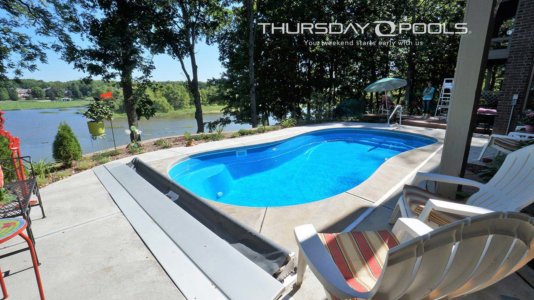 during winter months will protect your pool and make getting your pool ready for use easier. If a pool is left uncovered, the leaves and debris will not only be a hassle to remove in the springtime but will break down over the winter months and cause havoc on water chemistry and possible staining.
during winter months will protect your pool and make getting your pool ready for use easier. If a pool is left uncovered, the leaves and debris will not only be a hassle to remove in the springtime but will break down over the winter months and cause havoc on water chemistry and possible staining.
There are three basic types of pool covers: tarp covers, safety covers (both solid and mesh) and automatic safety covers. Tarp covers are tarps that are made to fit over your pool and rest on top of the water. They are secured by being weighted down. Often, they are weighted down with water tubes (vinyl bags filled with water).
Safety covers are available in mesh and solid. Safety covers are anchored to the perimeter of the pool deck using grommets and steel springs. These are made to suspend freely and fit snugly over the pool. Mesh safety covers allow water to filter through the cover into the pool. The solid safety covers do not. Any pool cover that holds water must be accompanied with a cover pump. Cover pumps continually keep the water pumped off the top of the pool cover.
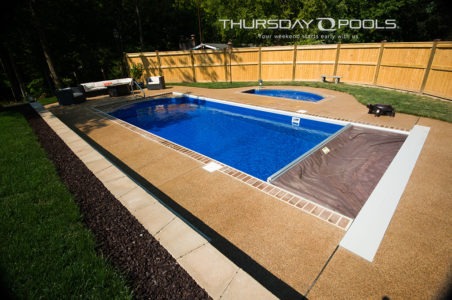
Automatic safety covers are built into a set of tracks that run the length of the pool and when closed rests on top of the pool water. An automatic safety cover provides all the benefits of a safety cover in 60 seconds or less. Not only are they perfect for the wintertime, but they will protect your pool on a regular basis.
Pool covers that meet ASTM safety cover standards are considered safety covers as well. When installed and used correctly, safety covers prevent children from accessing the pool water. Pool safety covers can be seen as one layer of protection. Thursday Pools supports the idea of providing multiple layers of protection to prevent drownings in pools or hot tubs. You should never rely on only one means of protection, and there is no replacement for constant adult supervision.
Our Thursday Pools fiberglass pools will fit with any type of pool cover. Find all our fiberglass pool designs here!
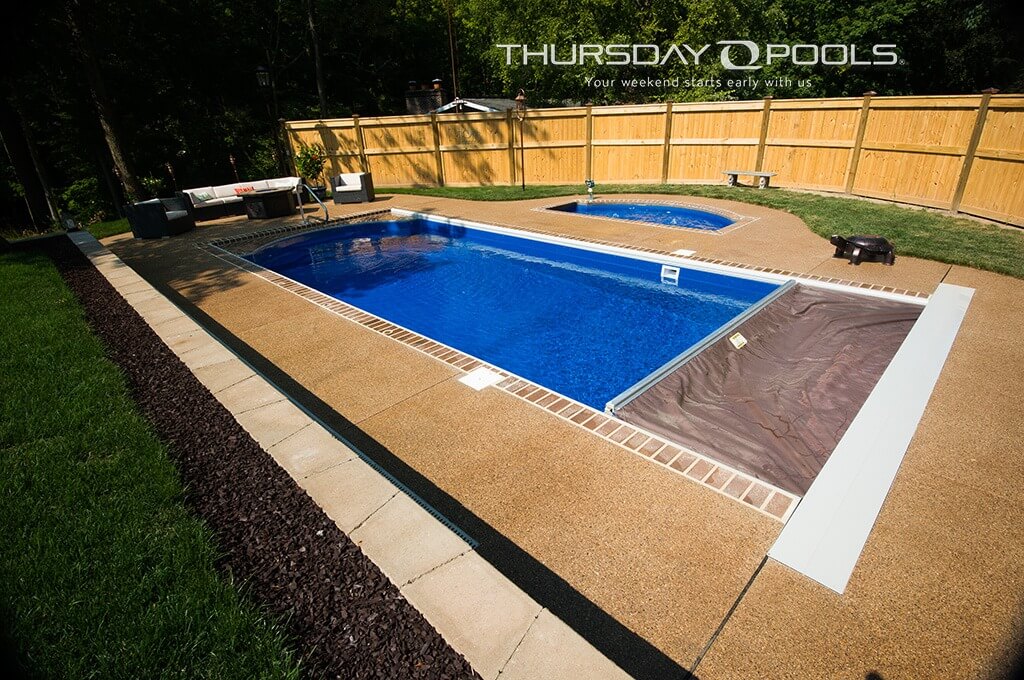
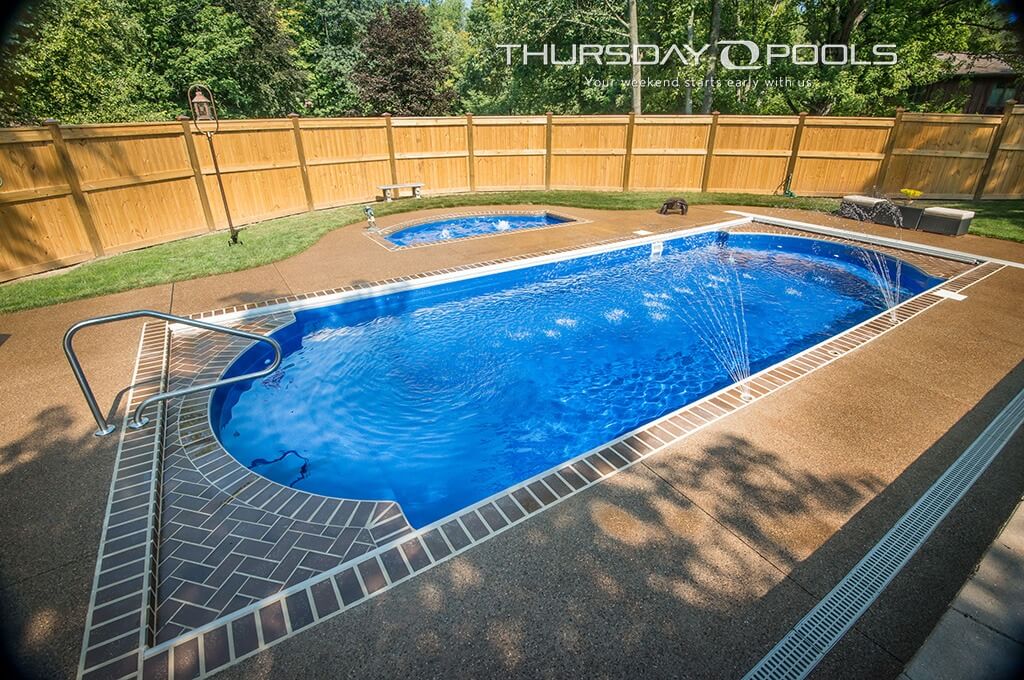
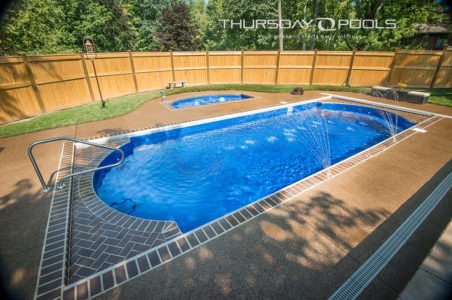 Pros of Salt Water Pools-The Benefits of Owning a Saltwater Pool
Pros of Salt Water Pools-The Benefits of Owning a Saltwater Pool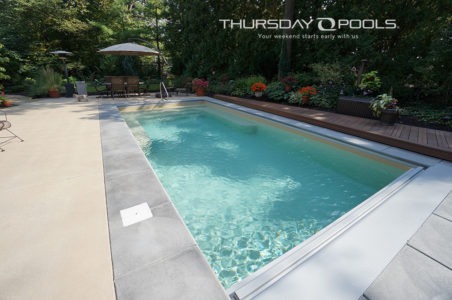 Cons of Salt Pools-The Disadvantage of Owning a Saltwater Pool
Cons of Salt Pools-The Disadvantage of Owning a Saltwater Pool 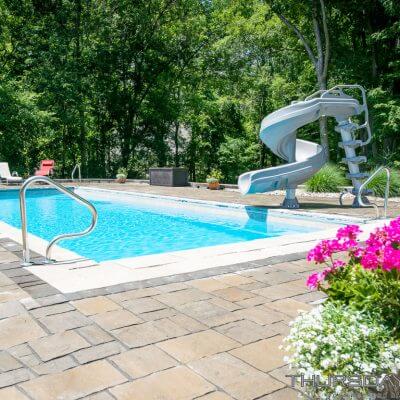
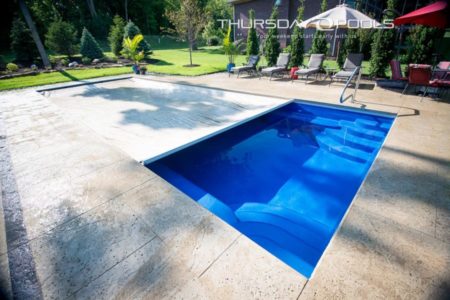 Automatic Pool Covers. Automatic pool covers do more than protect your loved ones and pets; they make owning your own pool easy. Automatic safety covers protect your inground pool from water evaporation loss which aids in keeping heat and chemicals in; helping you keep pool chemicals and heating costs down. They also aid in keeping debris out allowing you more time for fun and frolicking rather than
Automatic Pool Covers. Automatic pool covers do more than protect your loved ones and pets; they make owning your own pool easy. Automatic safety covers protect your inground pool from water evaporation loss which aids in keeping heat and chemicals in; helping you keep pool chemicals and heating costs down. They also aid in keeping debris out allowing you more time for fun and frolicking rather than 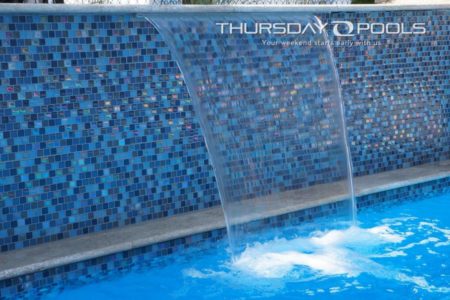 Water Features. The sound of moving water is mesmerizing and provides health benefits such as stress relief and relaxation. The best part about adding a water feature as one of your pool options is it allows you to enjoy the pool without even being in it. Adding a water feature to your inground pool can be as simple as a deck jet or as elaborate as a custom waterfall. Water features that circulate the pool water are not easily added on later and should be planned for during the construction phase of your project.
Water Features. The sound of moving water is mesmerizing and provides health benefits such as stress relief and relaxation. The best part about adding a water feature as one of your pool options is it allows you to enjoy the pool without even being in it. Adding a water feature to your inground pool can be as simple as a deck jet or as elaborate as a custom waterfall. Water features that circulate the pool water are not easily added on later and should be planned for during the construction phase of your project.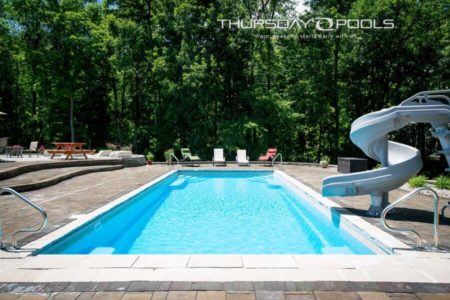 Slides and Sports. Slides and water sports can bring out the competitive spirit in any family and raise the fun level. The options for inground pool slides have grown tremendously over the last decade. Extreme slides such as SR Smith’s
Slides and Sports. Slides and water sports can bring out the competitive spirit in any family and raise the fun level. The options for inground pool slides have grown tremendously over the last decade. Extreme slides such as SR Smith’s